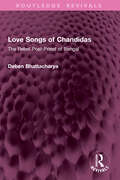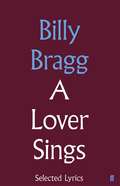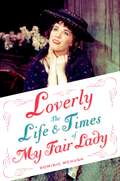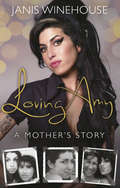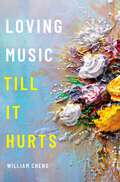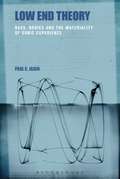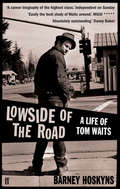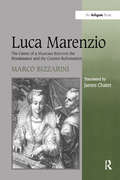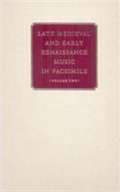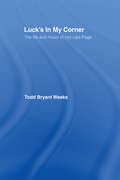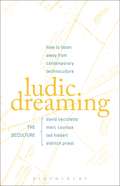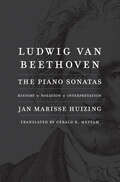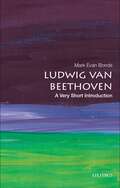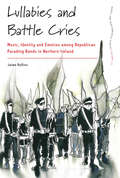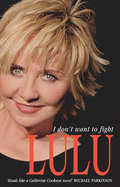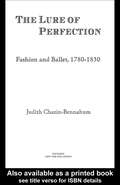- Table View
- List View
Love Songs of Chandidas: The Rebel Poet-Priest of Bengal (Routledge Revivals)
First published in 1967, Love Songs of Chandidās provides an informative introduction which makes vividly clear the importance of Chandidās to the Indian peasant masses. As the author tells us, the traveller through the Birbhum area of Bengal hears Chandidās everywhere, in the villages, in the fields, on the roads. Night after night, the people gather in the temple courtyards or on the village greens to listen to professional ‘Kirtan’ singers sing his songs of the divine love of Radha and Krishna. The influence of Chandidās on contemporary Bengali literature is equally important, his songs having enriched the work of great poets such as Rabindranath Tagore, Govindadas, and many others. The author also discusses the interesting topic of the Sahaja (‘spontaneity’) movement in Indian faith and literature, as manifested in the songs of Chandidās, and the worship of love-making, divine and human, as an important aspect of this faith. This book will be of interest to students of literature, music, history, cultural studies and South Asian studies.
A Lover Sings: Selected Lyrics
by Billy BraggBilly Bragg is one of Britain's most distinctive and accomplished songwriters, whose work has articulated the passions, both personal and political, of Britain during the past five decades. A Lover Sings contains over seventy of his best-known lyrics, selected and annotated by the author.'Sexuality', 'A New England', 'Levi Stubbs' Tears' - these are unadorned, poetic songs that skilfully interweave everyday observation with much broader concerns: of fairness and outrage, of generosity and love. A Lover Sings reveals a unique sensibility: principled and proudly of the Left, funny, forthright and tender. It is a remarkable collection.
Loverly: The Life and Times of My Fair Lady (Broadway Legacies)
by Dominic McHughFew musicals have had the impact of Lerner and Loewe's timeless classic My Fair Lady. Sitting in the middle of an era dominated by such seminal figures as Rodgers and Hammerstein, Frank Loesser, and Leonard Bernstein, My Fair Lady not only enjoyed critical success similar to that of its rivals but also had by far the longest run of a Broadway musical up to that time. From 1956 to 1962, its original production played without a break for 2,717 performances, and the show went on to be adapted into one of the most successful movie musicals of all time in 1964, when it won eight Academy Awards. Internationally, the show also broke records in London, and the original production toured to Russia at the height of the Cold War in an attempt to build goodwill. It remains a staple of the musical theater canon today, an oft-staged show in national, regional, and high school theaters across the country. Using previously-unpublished documents, author Dominic McHugh presents a completely new, behind-the-scenes look at the five-year creation of the show, revealing the tensions and complex relationships that went into its making. McHugh charts the show from the aftermath of the premiere of Shaw's Pygmalion and the playwright's persistent refusal to allow it to be made into a musical, through to the quarrel that led lyricist Alan Jay Lerner and composer Frederick Loewe to part ways halfway through writing the show, up to opening night and through to the present. This book is the first to shed light on the many behind-the-scenes creative discussions that took place from casting decisions all the way through the final months of frantic preparation leading to the premiere in March 1956. McHugh also traces sketches for the show, looking particularly at the lines cut during the rehearsal and tryout periods, to demonstrate how Lerner evolved the relationship between Higgins and Eliza in such a way as to maintain the delicate balance of ambiguity that characterizes their association in the published script. He looks too at the movie version, and how the cast album and subsequent revivals have influenced the way in which the show has been received. Overall, this book explores why My Fair Lady continues to resonate with audiences worldwide more than fifty years after its premiere.
Loverly: The Life and Times of My Fair Lady (Broadway Legacies)
by Dominic McHughFew musicals have had the impact of Lerner and Loewe's timeless classic My Fair Lady. Sitting in the middle of an era dominated by such seminal figures as Rodgers and Hammerstein, Frank Loesser, and Leonard Bernstein, My Fair Lady not only enjoyed critical success similar to that of its rivals but also had by far the longest run of a Broadway musical up to that time. From 1956 to 1962, its original production played without a break for 2,717 performances, and the show went on to be adapted into one of the most successful movie musicals of all time in 1964, when it won eight Academy Awards. Internationally, the show also broke records in London, and the original production toured to Russia at the height of the Cold War in an attempt to build goodwill. It remains a staple of the musical theater canon today, an oft-staged show in national, regional, and high school theaters across the country. Using previously-unpublished documents, author Dominic McHugh presents a completely new, behind-the-scenes look at the five-year creation of the show, revealing the tensions and complex relationships that went into its making. McHugh charts the show from the aftermath of the premiere of Shaw's Pygmalion and the playwright's persistent refusal to allow it to be made into a musical, through to the quarrel that led lyricist Alan Jay Lerner and composer Frederick Loewe to part ways halfway through writing the show, up to opening night and through to the present. This book is the first to shed light on the many behind-the-scenes creative discussions that took place from casting decisions all the way through the final months of frantic preparation leading to the premiere in March 1956. McHugh also traces sketches for the show, looking particularly at the lines cut during the rehearsal and tryout periods, to demonstrate how Lerner evolved the relationship between Higgins and Eliza in such a way as to maintain the delicate balance of ambiguity that characterizes their association in the published script. He looks too at the movie version, and how the cast album and subsequent revivals have influenced the way in which the show has been received. Overall, this book explores why My Fair Lady continues to resonate with audiences worldwide more than fifty years after its premiere.
Loving Amy: A Mother's Story
by Janis WinehouseArguably the most gifted artist of her generation, Amy Winehouse died tragically young, aged just 27. With a worldwide fanbase and millions of record sales to her name, she should have had the world at her feet. Instead, in the years prior to her passing, she battled with addictions and was often the subject of lurid tabloid headlines. But who was the real Amy?Amy's mother, Janis, knew her in a way that no-one else did. In this warm, poignant and, at times, heartbreaking memoir, she reveals the full story of the daughter she loved. As the world watched the rise of a superstar, then the freefall of an addict to her untimely death, Janis simply saw her Amy, the girl she'd given birth to in 1983; the girl she'd raised and stood by despite her unruly behaviour; the girl whose body she was forced to identify two days after her death - and the girl she's grieved for every day since.Packed with exclusive material that has never been seen before, such as extracts from Amy's teenage diaries, photos and notes, Loving Amy offers a new and intimate perspective on the life and death of the phenomenon that is Amy Winehouse.
Loving Music Till It Hurts
by William ChengCan music feel pain? Do songs possess dignity? Do symphonies have rights? Of course not, you might say. Yet think of how we anthropomorphize music, not least when we believe it has been somehow mistreated. A singer butchered or mangled the "Star-Spangled Banner" at the Super Bowl. An underrehearsed cover band made a mockery of Led Zeppelin's classics. An orchestra didn't quite do justice to Mozart's Requiem. Such lively language upholds music as a sentient companion susceptible to injury and in need of fierce protection. There's nothing wrong with the human instinct to safeguard beloved music . . . except, perhaps, when this instinct leads us to hurt or neglect fellow human beings in turn: say, by heaping outsized shame upon those who seem to do music wrong; or by rushing to defend a conductor's beautiful recordings while failing to defend the multiple victims who have accused this maestro of sexual assault. Loving Music Till It Hurts is a capacious exploration of how people's head-over-heels attachments to music can variously align or conflict with agendas of social justice. How do we respond when loving music and loving people appear to clash?
Loving Music Till It Hurts
by William ChengCan music feel pain? Do songs possess dignity? Do symphonies have rights? Of course not, you might say. Yet think of how we anthropomorphize music, not least when we believe it has been somehow mistreated. A singer butchered or mangled the "Star-Spangled Banner" at the Super Bowl. An underrehearsed cover band made a mockery of Led Zeppelin's classics. An orchestra didn't quite do justice to Mozart's Requiem. Such lively language upholds music as a sentient companion susceptible to injury and in need of fierce protection. There's nothing wrong with the human instinct to safeguard beloved music . . . except, perhaps, when this instinct leads us to hurt or neglect fellow human beings in turn: say, by heaping outsized shame upon those who seem to do music wrong; or by rushing to defend a conductor's beautiful recordings while failing to defend the multiple victims who have accused this maestro of sexual assault. Loving Music Till It Hurts is a capacious exploration of how people's head-over-heels attachments to music can variously align or conflict with agendas of social justice. How do we respond when loving music and loving people appear to clash?
Loving the Band
by Emily BakerLoving the Band by Emily Baker is a boy-band novel for romance and pop-loving readers!For all the millions of fans across the globe of One Direction, The Wanted, JLS, Justin Bieber... and in fact anyone who's ever had a pop-idol crush!What happens when you meet the boy band of every girl's dream . . . and not one but two of them fall for you?Two of the world's most popular boys.One gorgeous girl . . .When Jess and her best friend Tegan meet The Only Truth, the hottest boy band in the world, she's not too fussed - she's heard of them but she's too busy getting over a recent break-up to get caught up in the hysteria that's taking over London.So when the boys need to hide from the paparazzi, the girls are happy to help. But Jess goes from indifference to infatuation when she starts getting close to two of the boys. One is friendly and flirty, the other is brooding and serious - and soon Jess has to make the biggest decision of her life. Jess may not have been a fan to begin with. She certainly is now.Emily Baker is a fantastically talented debut UK author. Only sixteen years old, Emily is a massive One Direction fan and her personal experience of being so devoted to a world-famous band gives this romantic YA novel its powerful emotion and authority. Loving the Band was inspired by a different fan-fiction novel Emily wrote and published on the youth writers' community site Movellas.
Low End Theory: Bass, Bodies and the Materiality of Sonic Experience
by Paul C. JasenLow End Theory probes the much-mythologized field of bass and low-frequency sound. It begins in music but quickly moves far beyond, following vibratory phenomena across time, disciplines and disparate cultural spheres (including hauntings, laboratories, organ workshops, burial mounds, sound art, studios, dancefloors, infrasonic anomalies, and a global mystery called The Hum). Low End Theory asks what it is about bass that has fascinated us for so long and made it such a busy site of bio-technological experimentation, driving developments in science, technology, the arts, and religious culture. The guiding question is not so much what we make of bass, but what it makes of us: how does it undulate and unsettle; how does it incite; how does it draw bodily thought into new equations with itself and its surroundings? Low End Theory is the first book to survey this sonorous terrain and devise a conceptual language proper to it. With its focus on sound's structuring agency and the multi-sensory aspects of sonic experience, it stands to make a transformative contribution to the study of music and sound, while pushing scholarship on affect, materiality, and the senses into fertile new territory. Through energetic and creative prose, Low End Theory works to put thought in touch with the vibratory encounter as no scholarly book has done before.For more information, visit: http://www.lowendtheorybook.com/
Low End Theory: Bass, Bodies and the Materiality of Sonic Experience
by Paul C. JasenLow End Theory probes the much-mythologized field of bass and low-frequency sound. It begins in music but quickly moves far beyond, following vibratory phenomena across time, disciplines and disparate cultural spheres (including hauntings, laboratories, organ workshops, burial mounds, sound art, studios, dancefloors, infrasonic anomalies, and a global mystery called The Hum). Low End Theory asks what it is about bass that has fascinated us for so long and made it such a busy site of bio-technological experimentation, driving developments in science, technology, the arts, and religious culture. The guiding question is not so much what we make of bass, but what it makes of us: how does it undulate and unsettle; how does it incite; how does it draw bodily thought into new equations with itself and its surroundings? Low End Theory is the first book to survey this sonorous terrain and devise a conceptual language proper to it. With its focus on sound's structuring agency and the multi-sensory aspects of sonic experience, it stands to make a transformative contribution to the study of music and sound, while pushing scholarship on affect, materiality, and the senses into fertile new territory. Through energetic and creative prose, Low End Theory works to put thought in touch with the vibratory encounter as no scholarly book has done before.For more information, visit: http://www.lowendtheorybook.com/
Lowside of the Road: A Life Of Tom Waits
by Barney HoskynsSpanning Tom Waits' extraordinary 40-year career, from Closing Time to Orphans, Lowside of the Road is Barney Hoskyns' unique take on one of rock's great enigmas. Like Bob Dylan and Neil Young, Waits is a chameleonic survivor who's achieved long-term success while retaining cult credibility and outsider mystique. From his perilous "jazzbo" years in '70s Los Angeles to the multiple-Grammy winner of recent years - by way of such shape-shifting '80s albums as Swordfishtrombones - this exhaustive biography charts Waits' life step-by-step and album-by-album. Affectionate and penetrating, and based on a combination of assiduous research and deep critical insight, this is a outstanding investigation of a notoriously private artist and performer - the definitive account to date of Tom Waits' life and work.
Luca Marenzio: The Career of a Musician Between the Renaissance and the Counter-Reformation
by Marco BizzariniRegarded by his contemporaries as the leading madrigal composer of his time, Luca Marenzio was an important figure in sixteenth-century Italian music, and also highly esteemed in England, Flanders and Poland. This English translation of Marco Bizzarini's study of the life and work of Marenzio provides valuable insights into the composer's influence and place in history, and features an extensive, up-to-date bibliography and the first published list of archival sources containing references to Marenzio. Women play a decisive role as dedicatees of Marenzio's madrigals and in influencing the way in which they were performed. Bizzarini examines in detail the influence of both female and male patrons and performers on Marenzio's music and career, including his connections with the confraternity of SS Trinit nd other institutions. Dedications were also a political tool, as the book reveals. Many of Marenzio's dedications were made at the request of his employer Cardinal d'Este who wanted to please his French allies. Bizzarini examines these extra-musical dimensions to Marenzio's work and discusses the composer's new musical directions under the more austere administration of Pope Clement VIII.
Luca Marenzio: The Career of a Musician Between the Renaissance and the Counter-Reformation
by Marco BizzariniRegarded by his contemporaries as the leading madrigal composer of his time, Luca Marenzio was an important figure in sixteenth-century Italian music, and also highly esteemed in England, Flanders and Poland. This English translation of Marco Bizzarini's study of the life and work of Marenzio provides valuable insights into the composer's influence and place in history, and features an extensive, up-to-date bibliography and the first published list of archival sources containing references to Marenzio. Women play a decisive role as dedicatees of Marenzio's madrigals and in influencing the way in which they were performed. Bizzarini examines in detail the influence of both female and male patrons and performers on Marenzio's music and career, including his connections with the confraternity of SS Trinit nd other institutions. Dedications were also a political tool, as the book reveals. Many of Marenzio's dedications were made at the request of his employer Cardinal d'Este who wanted to please his French allies. Bizzarini examines these extra-musical dimensions to Marenzio's work and discusses the composer's new musical directions under the more austere administration of Pope Clement VIII.
The Lucca Choirbook: Lucca, Archivio Di Stato, Ms 238 - Lucca, Archivio Arcivescovile, Ms 97 - Pisa, Archivio Arcivescovile, Biblioteca Maffi, Cartella 11/iii (PDF) (Late Medieval And Early Renaissance Music In Facsimile Ser. #2)
by Reinhard StrohmMore than forty years ago in the state archives of Lucca, Italy, musicologist Reinhard Strohm noticed that bindings on some of the books were unusual: they consisted of the pages of a centuries-old music manuscript. In the following years, Strohm worked with the archivists to remove these leaves and reassemble as much as possible of the original manuscript, a major cultural recovery now known as The Lucca Choirbook. The recovered volume comprises what remains of a gigantic cathedral codex commissioned in Bruges around 1463 and containing English, Franco-Flemish, and Italian sacred music of the fifteenth century—including works by the celebrated composers Guillaume Du Fay and Henricus Isaac. This facsimile of the choirbook includes all the known leaves, ordered according to their proper placement in the original codex. In the introduction, Strohm tells the fascinating story of this choirbook, identifying its early users and reconstructing its travel from Bruges to Lucca.
Luck's In My Corner: The Life and Music of Hot Lips Page
by Todd Bryant WeeksLuck’s in My Corner is a comprehensive biography of one of the most compelling jazz musicians of the Swing Era, Oran "Hot Lips’ Page. Page was the greatest of the Kansas City trumpeters, whose crackling, growling solos made him the go-to man during Count Basie’s earliest days as a bandleader. Page went on to be a featured trumpeter with Artie Shaw, a star of New York’s 52nd street, and a pioneer of the R & B scene of the 1950s. This book presents an in-depth chronology of Page’s career, with special attention paid to the development of his trumpet style. Luck’s in My Corner examines the life and music of a forgotten figure of the Swing Era and returns him to his rightful place as a leading light in the world of jazz. Todd Bryant Weeks has combined genealogical, musicological, discographical and historical research, resulting in a revealing and entertaining examination of a life that spanned major changes in American popular music. This book includes a new and complete discography by the author and dozens of unpublished photos.
Luck's In My Corner: The Life and Music of Hot Lips Page
by Todd Bryant WeeksLuck’s in My Corner is a comprehensive biography of one of the most compelling jazz musicians of the Swing Era, Oran "Hot Lips’ Page. Page was the greatest of the Kansas City trumpeters, whose crackling, growling solos made him the go-to man during Count Basie’s earliest days as a bandleader. Page went on to be a featured trumpeter with Artie Shaw, a star of New York’s 52nd street, and a pioneer of the R & B scene of the 1950s. This book presents an in-depth chronology of Page’s career, with special attention paid to the development of his trumpet style. Luck’s in My Corner examines the life and music of a forgotten figure of the Swing Era and returns him to his rightful place as a leading light in the world of jazz. Todd Bryant Weeks has combined genealogical, musicological, discographical and historical research, resulting in a revealing and entertaining examination of a life that spanned major changes in American popular music. This book includes a new and complete discography by the author and dozens of unpublished photos.
Ludic Dreaming: How to Listen Away from Contemporary Technoculture
by Eldritch Priest David Cecchetto Marc Couroux Ted HiebertLudic Dreaming uses (sometimes fictional) dreams as a method for examining sound and contemporary technoculture's esoteric exchanges, refusing both the strictures of visually dominated logic and the celebratory tone that so often characterizes the "sonic turn.†? Instead, through a series of eight quasi-analytical essays on the condition of listening, the book forwards a robust engagement with sounds (human and nonhuman alike) that leverages particularity in its full, radical singularity: what is a dream, after all, if not an incipient physics that isn't held to the scientific demand for repeatability? Thus, these studies declare their challenge to the conventions of argumentation and situate themselves at a threshold between theory and fiction, one that encourages reader and writer alike to make lateral connections between otherwise wildly incongruent subjects and states of affairs. Put differently, Ludic Dreaming is a how-to book for listening away from the seeming fatality of contemporary technologies, which is to say, away from the seeming inevitability of late capitalistic nihilism.
Ludic Dreaming: How to Listen Away from Contemporary Technoculture
by Eldritch Priest David Cecchetto Marc Couroux Ted HiebertLudic Dreaming uses (sometimes fictional) dreams as a method for examining sound and contemporary technoculture's esoteric exchanges, refusing both the strictures of visually dominated logic and the celebratory tone that so often characterizes the “sonic turn.” Instead, through a series of eight quasi-analytical essays on the condition of listening, the book forwards a robust engagement with sounds (human and nonhuman alike) that leverages particularity in its full, radical singularity: what is a dream, after all, if not an incipient physics that isn't held to the scientific demand for repeatability? Thus, these studies declare their challenge to the conventions of argumentation and situate themselves at a threshold between theory and fiction, one that encourages reader and writer alike to make lateral connections between otherwise wildly incongruent subjects and states of affairs. Put differently, Ludic Dreaming is a how-to book for listening away from the seeming fatality of contemporary technologies, which is to say, away from the seeming inevitability of late capitalistic nihilism.
Ludwig van Beethoven: The Piano Sonatas; History, Notation, Interpretation
by Jan Marisse HuizingA comprehensive and immersive survey of thirty-five Beethoven piano sonatasBeethoven’s piano sonatas are among the iconic cornerstones of the classical music repertoire. Jan Marisse Huizing offers an in-depth study of the sonatas using available autographs, first editions, recordings, and nearly three hundred musical examples.Digging into the historical background and historical performance practice, the book provides illuminating detail on Beethoven’s pianism as well as his characteristics of notation, form and content, “types of touch,” articulation, beaming, pedal indications, character, rubato, meter, metric constructions, tempo, and metronome marks.Packed with anecdotes, quotations, and considerable new information, the book will inspire all involved with these masterworks, playing a fortepiano or modern Grand, giving the sense of the composer sitting beside them as he translates his inspiration and ideas into his notation.
Ludwig van Beethoven: A Very Short Introduction (Very Short Introductions)
by Mark Evan BondsProposes a new way of listening to Beethoven by understanding his music as an expression of his entire self, not just the iconic scowl Despite the ups and downs of his personal life and professional career - even in the face of deafness - Beethoven remained remarkably consistent in his most basic convictions about his art. This inner consistency, writes the music historian Mark Evan Bonds, provides the key to understanding the composer's life and works. Beethoven approached music as he approached life, weighing whatever occupied him from a variety of perspectives: a melodic idea, a musical genre, a word or phrase, a friend, a lover, a patron, money, politics, religion. His ability to unlock so many possibilities from each helps explain the emotional breadth and richness of his output as a whole, from the heaven-storming Ninth Symphony to the eccentric Eighth, and from the arcane Great Fugue to the crowd-pleasing Wellington's Victory. Beethoven's works, Bonds argues, are a series of variations on his life. The iconic scowl so familiar from later images of the composer is but one of many attitudes he could assume and project through his music. The supposedly characteristic furrowed brow and frown, moreover, came only after his time. Discarding tired myths about the composer, Bonds proposes a new way of listening to Beethoven by hearing his music as an expression of his entire self, not just his scowling self.
Ludwig van Beethoven: A Very Short Introduction (Very Short Introductions)
by Mark Evan BondsProposes a new way of listening to Beethoven by understanding his music as an expression of his entire self, not just the iconic scowl Despite the ups and downs of his personal life and professional career - even in the face of deafness - Beethoven remained remarkably consistent in his most basic convictions about his art. This inner consistency, writes the music historian Mark Evan Bonds, provides the key to understanding the composer's life and works. Beethoven approached music as he approached life, weighing whatever occupied him from a variety of perspectives: a melodic idea, a musical genre, a word or phrase, a friend, a lover, a patron, money, politics, religion. His ability to unlock so many possibilities from each helps explain the emotional breadth and richness of his output as a whole, from the heaven-storming Ninth Symphony to the eccentric Eighth, and from the arcane Great Fugue to the crowd-pleasing Wellington's Victory. Beethoven's works, Bonds argues, are a series of variations on his life. The iconic scowl so familiar from later images of the composer is but one of many attitudes he could assume and project through his music. The supposedly characteristic furrowed brow and frown, moreover, came only after his time. Discarding tired myths about the composer, Bonds proposes a new way of listening to Beethoven by hearing his music as an expression of his entire self, not just his scowling self.
Lullabies and Battle Cries: Music, Identity and Emotion among Republican Parading Bands in Northern Ireland (Dance and Performance Studies #13)
by Jaime RollinsSet against a volatile political landscape, Irish republican culture has struggled to maintain continuity with the past, affirm legitimacy in the present, and generate a sense of community for the future. Lullabies and Battle Cries explores the relationship between music, emotion, memory, and identity in republican parading bands, with a focus on how this music continues to be utilized in a post-conflict climate. As author Jaime Rollins shows, rebel parade music provides a foundational idiom of national and republican expression, acting as a critical medium for shaping new political identities within continually shifting dynamics of republican culture.
Lulu: I Don't Want To Fight
by LuluThis is the remarkable memoir of the small girl (5 foot 1 inch tall) with the huge voice. At the age of 15, in 1964, Lulu - born Marie Lawrie in Glasgow - was already a star with her international hit song 'Shout'. At 18 she stole hearts as an English schoolgirl to Sidney Poitier's teacher with the movie hit 'To Sir With Love'. At 21, she married a Bee Gee, Maurice Gibb, and tied as winner of the Eurovision Song Contest with 'Boom-Bang-a-Bang'. Yet in 1993 she reached No.1 with 'Relight My Fire' (with Take That). Nearly forty years at the top of the showbiz tree, Lulu has never been afraid to experiment with new trends, and her book reflects the daring that took a girl from a Glasgow tenement to international stardom - as 'To Sir With Love' says, 'from crayons to perfume'.I DON'T WANT TO FIGHT (the title of a song Lulu wrote and Tina Turner recorded) is the devastatingly candid autobiography of a singer who has never shirked from facing anything.
The Lure of Perfection: Fashion and Ballet, 1780-1830
by Judith BennahumTHE LURE OF PERFECTION: FASHION AND BALLET, 1780-1830 offers a unique look at how ballet influenced contemporary fashion and women's body image, and how street fashions in turn were reflected by the costumes worn by ballet dancers. Through years of research, the author has traced the interplay between fashion, social trends, and the development of dance. During the 18th century, women literally took up twice as much space as men; their billowing dresses ballooned out from their figures, sometimes a full 55 inches, to display costly jewelry and fine brocade work; similar costumes appeared on stage. But clothing also limited her movement; it literally disabled them, making the dances themselves little more than tableaux. Movement was further inhibited by high shoes and tight corsets; thus the image of the rigidly straight, long-lined dancer is as much a product of clothing as aesthetics. However, with changing times came new trends. An increased interest in natural movement and the common folk led to less-restrictive clothing. As viewers demanded more virtuosic dancers, women literally danced their way to freedom. THE LURE OF PERFECTION will interest students of dance and cultural history, and women's studies. It is a fascinating, well-researched look at the interplay of fashion, dance, and culture-still very much a part of our world today.
The Lure of Perfection: Fashion and Ballet, 1780-1830
by Judith BennahumTHE LURE OF PERFECTION: FASHION AND BALLET, 1780-1830 offers a unique look at how ballet influenced contemporary fashion and women's body image, and how street fashions in turn were reflected by the costumes worn by ballet dancers. Through years of research, the author has traced the interplay between fashion, social trends, and the development of dance. During the 18th century, women literally took up twice as much space as men; their billowing dresses ballooned out from their figures, sometimes a full 55 inches, to display costly jewelry and fine brocade work; similar costumes appeared on stage. But clothing also limited her movement; it literally disabled them, making the dances themselves little more than tableaux. Movement was further inhibited by high shoes and tight corsets; thus the image of the rigidly straight, long-lined dancer is as much a product of clothing as aesthetics. However, with changing times came new trends. An increased interest in natural movement and the common folk led to less-restrictive clothing. As viewers demanded more virtuosic dancers, women literally danced their way to freedom. THE LURE OF PERFECTION will interest students of dance and cultural history, and women's studies. It is a fascinating, well-researched look at the interplay of fashion, dance, and culture-still very much a part of our world today.
